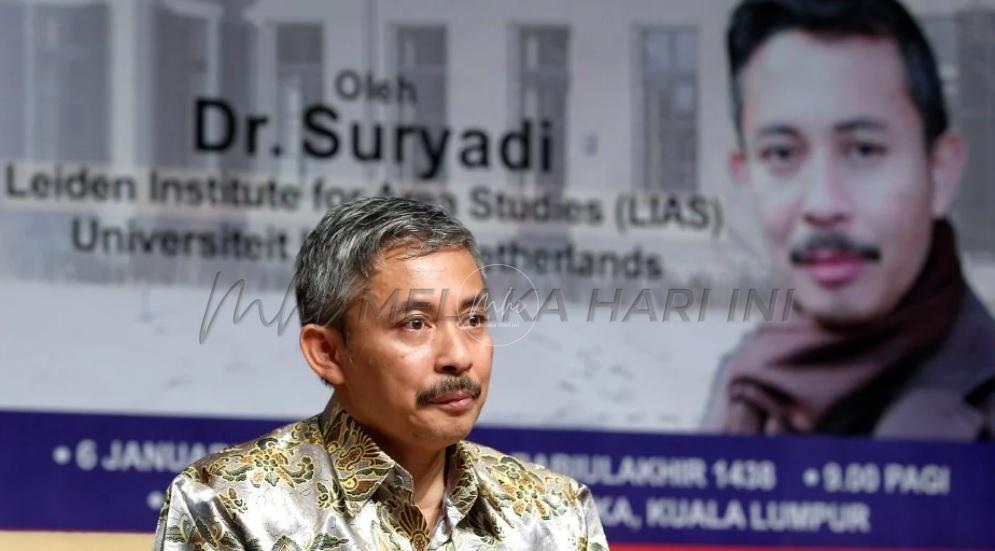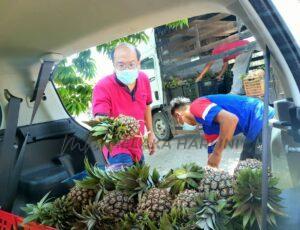
A Sense of Minangness: Pop Minang and the Rantau
THE merging of the rantau with new technologies have forged the sense of Minangness to her perantaus. Oslan Husein and Elly Kassim, Minangkabau singers in the 1950s; and verbals art forms like pidato adat and pasambahan are within reach through the reproduction of sounds (and images) through the various social media Internet platforms.
Before digitization, it was the mechanical media – oral and aurality. The mediation and remediation of culture demonstrate the ongoing adaptation of cultures to media technologies. One such study was done by fellow academic, media and cultural studies scholar, Dr. Suryadi.
His book Audible Locality: The Recording Industry in Indonesia and its Approach to Minangkabau Music and Oral Tradition published in 2020 is a rare contribution to the scholarship on what I call Malay Media Studies. Suryadi (he goes by one name), who teaches at the Department of South and Southeast Studies, Leiden Institute for Area Studies at Leiden University in the Netherlands, explores the use, consumption and effects of the recording media in the West Sumatran Minangkabau context. He sees the Minangkabau recording industry as an agency for ethnic expression in the modern world.
Minangkabau commercial cassettes and VCD’s chronicle the Minangkabau past and contemporary cultural dynamics in the engagement with the outside world. His work does not simply examine the effects of media. Instead he argues that regional recording industries, have greatly increased the (re)production of local cultural sounds since the early twentieth century. Recording technology moulded traits and existence of ethnicities in the Minangkabau world.
The focus on the Minangkabau recording industry delved into the structure and socio-cultural landscape. The mechanical reproduction business had successfully generated and converted the cultural and social capital of Minangkabau ethnicity. The emergence of the West Sumatran recording industry in the 1970s has produced recordings of Minangkabau music genres, popular as well as traditional ones. In recent years, its products have shown significant diversification in terms of genre and musical style, and recordings has also greatly increased.
Suryadi categorises the products of the Minangkabau recording industry into three types. First is the Minangkabau pop music – called pop Minang, the focus of this essay. Second, traditional genres associated with Minangkabau oral literature or traditional verbal arts. Third, how the genres shaped by the use of recording technology itself, depends on the media for their existence. These are called media-bound genres.
Those who have toured the Minangkabau heartlands before would encounter pop Minang the moment their tour bus moves out of Bandara Minangkabau – one of two airports in the world named after an ethnic group. In a way, pop Minang relays the Minangness of Minangkabau from there up to the heartlands in Bukittinggi some two to three hours later, depending on traffic conditions among others.
Pop Minang informs us of contested cultural space, struggle, consent and resistance. It is a collusion and a collision with modernity. Publicly accessible and widely disseminated, pop Minang cassettes and VCDs increase it agency by presenting powerful Minangkabau encodings of the complexities faced in modern society. Pop Minang has been described as “the sound of longing for home.”
Born in Pariaman, now West Sumatra in 1965, and a familiar face in Malaysian academic circles and the Minangkabau perantaus here, Suryadi has been following the aesthetics of pop Minang from the 1950’s up to 2006, and the Minangkabau community responses through local media and other platforms. Among other things, he examines the influences that has shaped pop Minang.
In the Indonesian music landscape, pop Minang is categorized as pop daerah (regional pop), while pop daerah in turn, is classified as a type of regional music (musik daerah), a catch-all phrase that includes every type of music sung in regional languages, from the most “westernized pop to the most indigenous performance tradition.” Pop Minang did not originate in the heartlands. It appeared from the rantau, especially in Jakara by Minangkabau perantaus. According to Suryadi, it was associated with the Orkes Gumarang, founded in 1953 in Jakarta.
It came out from a distinctly Minangkabau-speaking community. Pop Minang is a mixture of traditional Minangkabau music, or verbal arts, to national or foreign musical influences. The lyrics are by definition in the Minangkabau language. Nevertheless its aesthetics, including syntax, rhythm, melody, tempo and formal structure differ from Minangkabau music genres. Another difference are the composers. Those of pop Minang songs are certainly known. Composers of traditional genres are anonymous.
The recording industry also has implications on language. It is Minangkabau dialects versus Bahasa Minangkabau Umum (General Minangkabau). The latter is used for communication among speakers across dialects in major Minangkabau towns such as Padang and Bukittinggi. The rantau becomes a place for innovation and improvisation. This was what happened to the Orkes. They transcended the issue of dialect and genre.
In Gumarang, Suryadi identifies the synthesis between Latin American with Minangkabau music. Strongly influenced by rumba, mambo and cha-cha-cha, Gumarang’s music was the Minangkabau lagu Melayu – using the maracas, piano, guitar, bass with idiophones talempong, aerophones saluang and bansi, chordophones rabab, and membranophones gandang. The rantau was a good place to experiment.
The name Gumarang was drawn from the Minangkabau oral story, (kaba) Cindua Mato. The Orkes is credited in introducing Minangkabau songs throughout Indonesia and Malaysia. Some of us grew up in the 1960s with Kampuang Nan Djauh di Mato (translated by Suryadi as “My distant Village”) by Orkes Gumarang. Listen to it again. Produced by Irama Record, it hit the Malayan/Malaysian airwaves entering the hearths and homes in the Peninsula.
And in 1958, Gumarang’s female singer Nurseha shot to fame with the release of the unforgettable Ayam den Lapeh (literally by Suryadi “My hen has run away”). Echoes of Minangness do not stop at national borders.
Langgani saluran Telegram kami untuk dapatkan berita-berita yang terkini.


